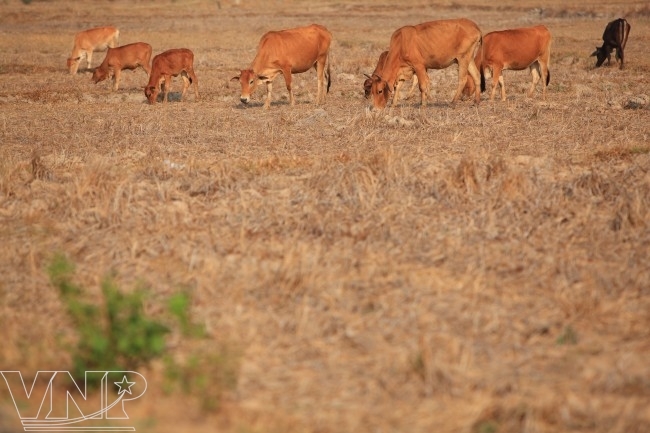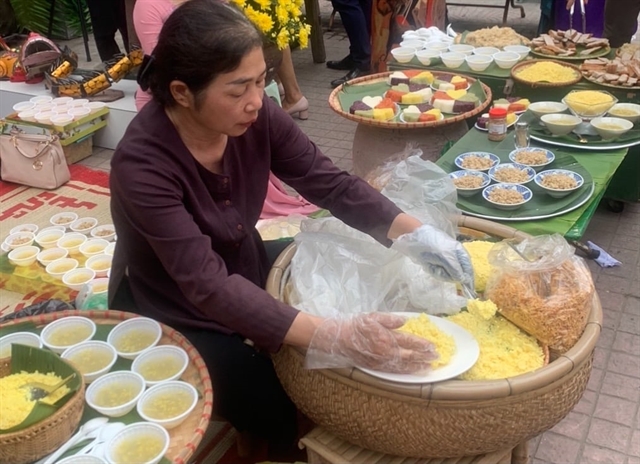.jpg) Environment
Environment

Tây Nguyên, south-central provinces to plant fewer crops as drought continues
 |
| Provinces in the Tây Nguyên (Central Highlands) and south-central regions will have to reduce cultivation by a total area of 50,000 ha for the upcoming planting season because of continued drought.– VNA/VNS Photo |
HCM CITY – Provinces in the Tây Nguyên (Central Highlands) and south-central regions will have to reduce cultivation by a total area of 50,000 ha for the upcoming planting season because of continued drought, ministry officials have said.
The water levels of reservoirs were still too low, and would be even lower for the summer-autumn crop, said Nguyễn Văn Tỉnh, deputy head of the Ministry of Agriculture and Rural Development’s Irrigation Department.
He spoke at a seminar held in Bình Thuận Province on March 17.
More than 31,000 households will suffer from a water shortage for daily use.
Rainfall from now to June is expected to be 30 -50 per cent lower than the average because of the impact of El Nino, according to the Tây Nguyên Centre for Hydrometeorology Forecasting.
Nguyễn Văn Hoà, deputy head of the Ministry of Agriculture and Rural Development’s Plant Cultivation Department, said the provinces should plan for the upcoming summer-autumn crop to mitigate the damage of drought.
Areas that face the threat of a water shortage should restructure their crop cultivation from three crops to two crops a year and reschedule cultivation times, he said.
“The provinces should use short-term and very short-term rice varieties which have a mature period of less than 90 days to grow in water shortage-prone areas,” he said.
The provinces should switch to growing drought-resistant crops and apply thrifty irrigation models, he said.
Phan Quang Thựu, deputy director of the Ninh Thuận Province Department of Agriculture and Rural Development, said the province’s reservoirs lost about 800,000 cu.m of water a day because of hot weather and winds.
“We have worked with the Đa Nhim Hydropower Plant to release water for local households and animals,” he said.
The Kon Tum Province People’s Committee on Wednesday announced the province faced a natural disaster because of drought.
The water levels in 400 of the province’s 500 irrigation reservoirs and dams are lower than the dead level which can not supply water for irrigation.
As of Wednesday, drought has affected more than 1,100ha of rice, crops and other trees in Kon Tum. Of the figure, 280ha of rice have been destroyed.
More than 4,000 wells in Kon Tum have dried up, causing many local people to seek daily use water in small streams.
In the 2015-16 winter-spring crop, provinces in Tây Nguyên and south central regions have planted a total of 292,380 ha of rice, down 20,344 ha against the previous winter-spring crop, according to the ministry’s Plant Cultivation Department.
Total rice output is estimated to reach 1.8 million tonnes, down 129,000 tonnes against the previous winter-spring crop because of the impact of drought.
Drought has caused a yield decline of more than 22,000 ha of rice in the 2016 winter-spring crop.
Deputy Minister of Agriculture and Rural Development Lê Quốc Doanh said many areas of the 2016 winter-spring crop were blooming so provinces should focus on ensuring yield.
The provinces should publicise forecasts about hydrometeorology, drought, water release schedules of reservoirs to local people, he said.
They should also review their crop structures and switch to growing more suitable crops in the long term, he said.
He told the provinces to speed up the building of irrigation works in drought-prone areas. –VNS









